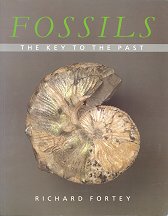
Richard Fortey, former senior palaeontologist at London’s Natural History Museum, here celebrates its pioneering work – delving into the scandals and skulduggery that unfolded alongside extraordinary scientific endeavour.
This is a fascinating, affectionate account of a world of hidden treasures by a scientist who combines rigorous professional learning with a gift for prose that sparkles with wit and intellect.
Scattered across the globe, these remarkable plants and animals speak to us of seminal events in the history of life. They range from humble algal mats dating back more than two billion years, to hardy musk oxen, which linger as the last vestiges of Ice Age megafauna. Their existence today offers us a tantalising glimpse of pivotal points in evolutionary history; of landscapes long vanished; of mass extinctions that changed the face of nature.
Fortey takes us on an incredible journey to these ancient worlds; on a moonlit beach in Delaware where the horseshoe crab shuffles its way through a violent romance, we catch a glimpse of life 450 million years ago. Along a stretch of Australian coastline, we bear witness to the sights that would have greeted a Precambrian dawn. And, in the dense rainforests of New Zealand where the secretive velvet worm creeps through rotting timber, we marvel at a living fossil which has survived almost unchanged since before the break-up of Gondwana, the ancient supercontinent, over 150 million years ago.
Written with Fortey’s customary sparkle and gusto, this wonderfully engrossing exploration of the world’s survivors combines the very best science writing about the origins of life with an explorer’s sense of adventure and a poet’s wonder at the natural world.
Discover the lives of animals and plants; the passage of the seasons; visits by fellow enthusiasts; the play of light between branches; the influence of geology; and how woodland has shaped history, architecture and industry. On every page Fortey shows how an intimate study of one small wood can reveal so much about the natural world, and demonstrates his relish for the incomparable pleasures of discovery.
In this memoir Richard Fortey offers an unforgettable portrait of how restless curiosity about the natural world led him to become a leading scientist and writer. From childhood experiments in a garden shed laboratory to a tent high in the Arctic in pursuit of fossils, this is a personal story of obsession, and a moving celebration of the natural world as a playground, a refuge and a muse for a life’s work filled with wonder.
Professor Richard Fortey has been a devoted field mycologist all his life. Drawing on decades of experience doing science in the woods and fields, Fortey starts with the perfect ‘fungus day’ – eating ceps in Piedmont. He introduces brown rotters and the white, earthstars and death caps; fungal annuals and perennials, dung lovers and parasites, even fungi that move through the trees like mycelial monkeys. We learn that the giant puffball produces more spores than there are known stars in the universe. He tells of the fungus that turns flies into zombies, the ones that clean up metallic waste; of honey fungus, the largest organism on earth, feeding on whole trees and the delicious subterranean fungi truffe de Périgord, the delight of gourmets.
Among these and many other ‘close encounters’ of a fungal kind, the book attempts to answer the questions: what are fungi? Why is fungal life so rich? Why aren’t they plants? Why did their means of reproduction escape discovery for so long? What role do they play in the development of life?
The vast kingdom of fungi is more diverse and species rich than plants or animals. Their glorious profusion has the starring role in this magical, deeply informed book which takes us from familiar places into strange worlds.